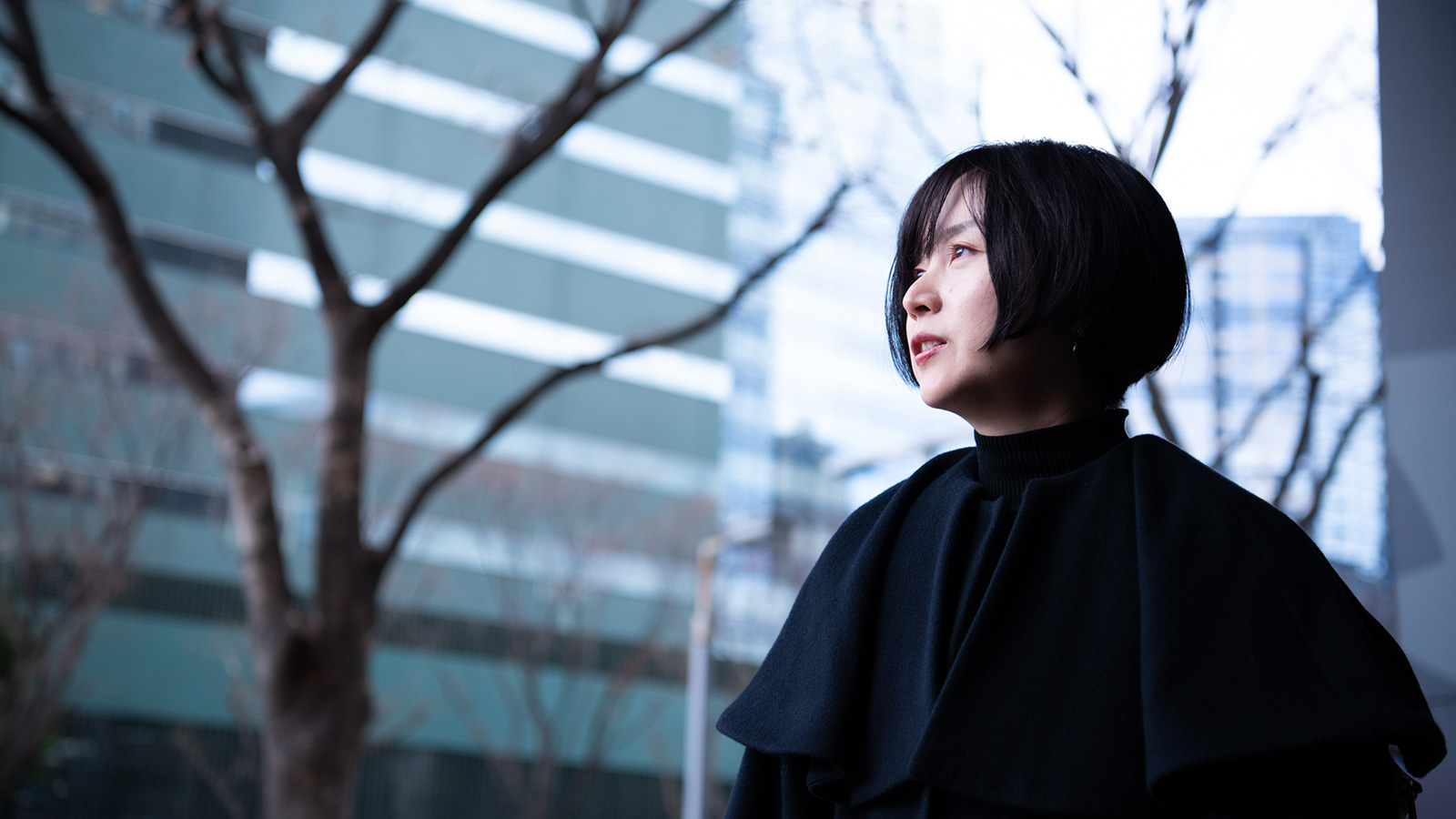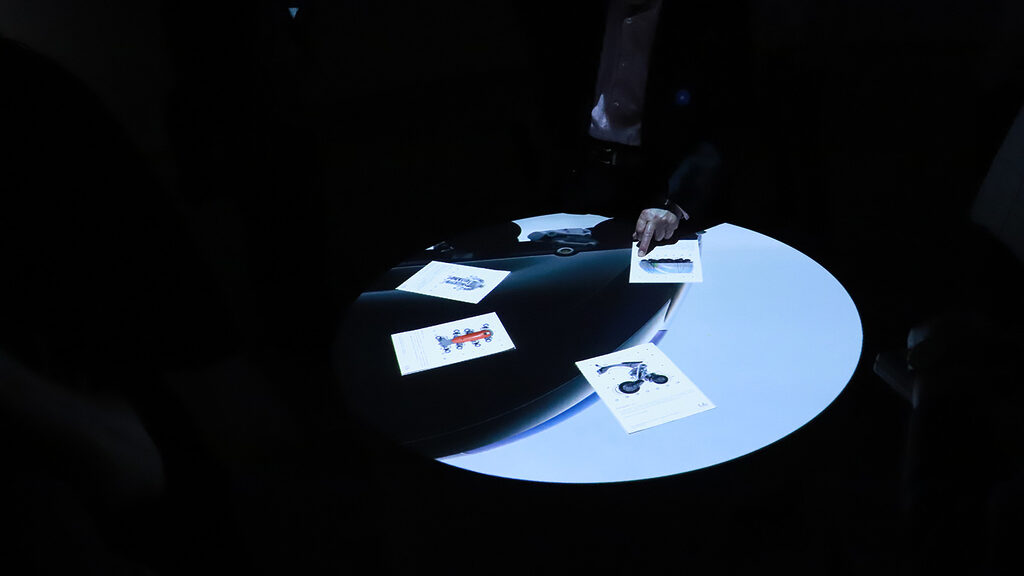
ICC x Media Art Chronology is packed with hints for our times
Exploring R&D material from the field of art/design (No.4)
Based on the "ICC x Media Art Chronology," we will introduce past exhibitions and projects organized by ICC, picking up themes that are suggestive of the present....
2024/09/03
Posted on 2024/09/03
ICC x Media Art Chronology
NTT InterCommunication Center [ICC] in Hatsudai, Tokyo, which I introduced the other day.(ICC), which handles many artworks that use cutting-edge technology, has a very extensive digital archive. For example, the video archive "HIVEIn the "ICC" section, video recordings of the annual activities since the opening of the museum, artist talks, and some contents of interviews with artists and scientists can be viewed on the web. (The video collection and some of the contents are available only in the ICC building.) Particularly recommended is the "ICC x Media Art ChronologyThis is a timeline of ICC's activities along with trends in media art and society. As you look at the detailed information of ICC's exhibitions and events, you will be amazed at the advanced themes that ICC has dealt with.
Therefore, based on the "ICC x Media Art Chronology," we will introduce past exhibitions and projects organized by ICC, picking up themes that are suggestive of the present.
ICC Biennial '97 "Communication/Discommunication" (1997)

The year 1997 was only a few years after the introduction of Windows 95, which led to the widespread use of the Internet in homes. In this context, ICC pointed out that "our world is becoming an increasingly complex and networked society as we approach the 21st century with advances in science and technology," and held an exhibition entitled "Communication/Discommunication The exhibition, "Communication/Discommunication.ICC Biennale '97The exhibition "Luna Park" was held at the Museum of Contemporary Art, Tokyo. The description of one of the exhibited works, Marina Grzinich & Aina Schmid "Luna Park," says, "The work focuses on the fact that in this world where communication appears to be smooth on the surface, there are in fact several simultaneous worlds and diverse and complex communication/discommunication exists. The work focuses on the existence of diverse and complex communication/discommunication in this world of seemingly smooth communication on the surface. Compared to 1997, when the Internet was in its infancy, communication tools have developed even further, and for those of us living today who must master multiple tools on a daily basis, this is a theme that is very familiar to us.
Digital Bauhaus--Visions of Education and Creativity for the New Century (1999)

When I was a high school student, I was required to choose either "liberal arts" or "science" as my career path when I took the university entrance examination. Recently, however, we seem to be living in an era of "cross-disciplinary and fusion of arts and sciences. The Council for the Creation of the Future of Education has identified "the development of human resources with universal knowledge and abilities that transcend the boundaries between the humanities and sciences, which is necessary in this unpredictable age," as one of the human resource development goals for the year 2022. (See the following page for more details.Proposals from the Council for Creating the Future of Education|Cabinet Secretariat Website )
On the other hand, the ICC noted in 1999 that "in recent years, a variety of educational and creative projects based on the fusion of art and technology, and art and science, have been underway around the world.Digital Bauhaus--Visions of Education and Creativity for the New Centurywas held at the exhibition "The Art of the Arts". It was an exhibition that showcased works by educators and students from domestic and overseas educational institutions, which were based on the theme of fusion of science and technology with art and culture, among others. It seems that the trend of the times has finally caught up with us.
Silent Dialogue: Invisible Communication (2007-2008)

The exhibition held at ICC from 2007 to 2008 was called "Silent Dialogue: Invisible Communication". The exhibition will explore from a new perspective how humans can relate to plants, animals, insects, and other living things by investigating their communication with each other or their ecology and referring to their behavior. In addition, there will be works that explore the relationship with the natural environment by visualizing and auditioning the natural environment based on biological information and applying biosensor technology, etc., as well as attempts to simulate the natural environment by computer and explore new ways of being in the "environment. The exhibition also introduces attempts to explore new "environments" by simulating the natural environment with a computer.
What kind of world do other living creatures perceive? I can't help but be curious, wondering if we have learned something new in this exhibition that cannot be perceived by the normal human body.
Some of the video recordings of the artist talks and performances held during the Triennial will be available on the web version of the video archive "The Artists' Talks and Performances: The Artists' Talks and Performances".HIVEIt is available to the public for viewing at
ICC Metaverse Project (2009-2010)

Some of you may remember that in 2021, Facebook Inc. changed its name to Meta. Although consumer-oriented metaverse is said to be somewhat stagnant these days, it is still one of the hottest technology trends.
Fifteen years ago, ICC had already launched a long-term project, "How can we utilize the Metaverse?ICC Metaverse Projectwas launched. Thinking back to the mid-2000s, virtual space services such as "Second Life" were temporarily booming. Although the social context was different, the expectations for the metaverse were the same then as they are now. Some of the considerations about the metaverse itself can still be applied today.
For example, see Koichiro Eto's "Origin and Evolution of Virtual SpaceThe "Metaverse" section covers past booms in the Metaverse (or something similar) and provides a bird's-eye view of the Metaverse. In addition, a discussion by Hiroya Tanaka and Yusuke Karasawa on why the metaverse has not lasted long ("Space, Environment, and Embodiment in the Metaverse(see "The first two books"), and Satoshi Hamano's "The first two books.Why are existing metaverse services and Second Life not good enough?"The accumulation of logs is far more interesting than the content!is also very interesting.
Art of the past has hints for the present
I used to say, "Artworks are lurking omens of the future.As I mentioned earlier, "Art of the past has hints for the present. It is truly a new learning from the past. However, it is difficult to go and see the artworks of the past themselves. That is why we have created the "ICC x Media Art ChronologyHow about using archives such as this one to decipher exhibition information in a time-traveling mood?

Masayo Yaso
Manager, Corporate Planning Department, Information Technology Development, Inc.
Graduated from Waseda University, Faculty of Letters I with a specialization in Art History, and received an MBA from the Graduate School of Business Administration (Waseda Business School), Waseda University. After working in technical research departments, new business teams, and marketing/promotion planning positions, he assumed his current position, concurrently serving as editor-in-chief of "Schrodinger's Wednesday" from April 2024.





